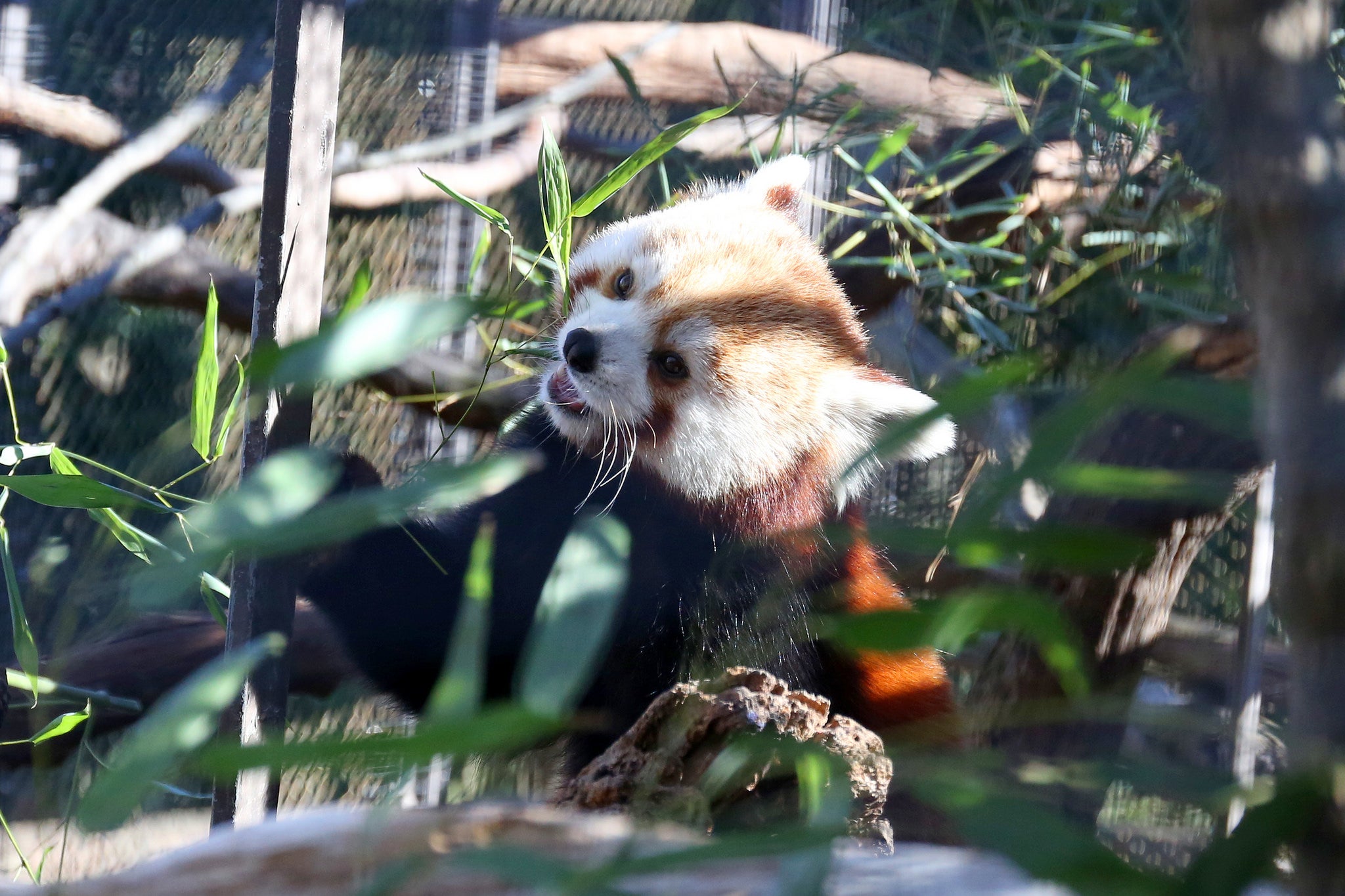Red Pandas Return to the Smithsonian's National Zoo
Tusa and Asa Are On Exhibit at the Small Mammal House
After a two-year hiatus, red pandas have returned to the Smithsonian's National Zoo. Visitors can see them at the Small Mammal House, where they will live until upgrades to the red panda exhibit on Asia Trail are completed. The upgrades are expected to be finished by spring.
We hope that our visitors will be as excited as we are to have red pandas back at the Zoo, said Steve Sarro, curator of Asia Trail and the Small Mammal House. We've made a commitment to study red pandas, and we hope that they inspire the public to help us conserve this endangered species and their habitat for many generations to come.
Last November, construction began on an indoor retreat --part of the larger red panda exhibit on Asia Trail-- which will provide them with a quiet environment complete with heating, air conditioning and new perches. The structure includes a window where visitors can view the animals while they are inside the habitat. The retreat was made possible in large part by Friends of the National Zoo members.
The red pandas named Tusa, a 1-year-old male, and Asa, a 1-year-old female, came to the National Zoo based on a recommendation from the Association of Zoos and Aquariums' Species Survival Plan. Tusa and Asa will serve as ambassadors for their species, illustrating the social nature and behavior of red pandas to staff and visitors. The Zoo will continue to share the latest updates and photos of the red panda pair on Facebook, Instagram and Twitter.
The Zoo's previous red panda pair, Rusty and Shama, were moved to the Smithsonian Conservation Biology Institute (SCBI) in January 2014 for breeding. Shama gave birth to three cubs sired by Rusty June 26, 2014, but died shortly thereafter. Rusty, known for his brief Zoo escape and safe return in June 2013, is thriving at SCBI.
For decades, scientists at SCBI have studied red pandas both in the wild and in human care. SCBI ecologists spend months in China every year studying wild giant pandas and their neighbors, including red pandas. In 2012, SCBI launched the largest health and reproductive study ever on the red panda. This study evaluated the largest red panda population housed under human care at the Chengdu Research Base of Giant Panda Breeding (Panda Base) in Chengdu, China. SCBI's Department of Conservation Medicine worked with experts at the Panda Base and George Mason University to conduct a biomedical survey of red pandas.
Native to China, Nepal, India and Bhutan, red pandas are listed as endangered by the International Union for Conservation of Nature. Conservationists estimate that fewer than 10,000 red pandas remain in the wild. In the past 18 years, populations have declined by 50 percent due to human expansion, habitat fragmentation and wildlife trafficking for traditional medicine and the pet trade.
